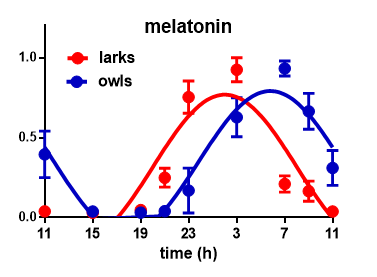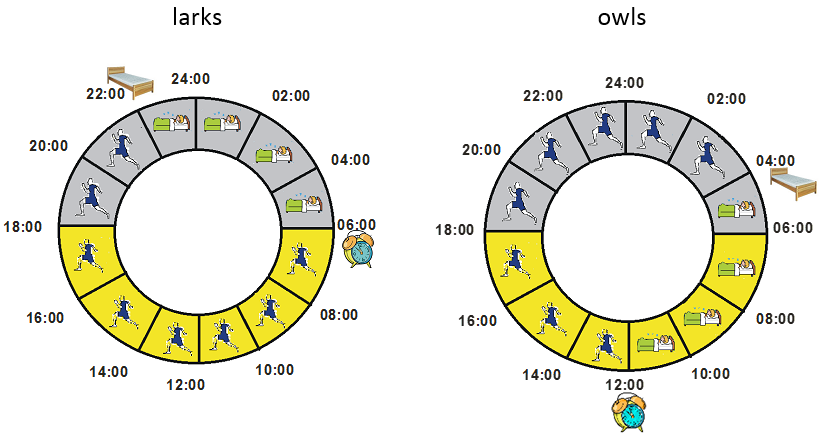Recent publication: Human chronotype is determined in bodily cells under real-life conditions
Nováková M, Sládek M, Sumová A. (2013): Human chronotype is determined in bodily cells under real-life conditions. Chronobiol Int. 30(4):607-17. http://informahealthcare.com/doi/abs/10.3109/07420528.2012.754455
The chronotype is influenced both genetically and by the environment, mainly by the light. It is dependent on the central clock located in the hypothalamus. The chronotype affects e.g. the individual tolerance to shift work. Therefore, it is useful to know the individual chronotype to assign the best working schedule. The chronotype can be determined from the timing of sleep and the secretion of melatonin which are controlled by the central clock in the brain. In our study, we found that the individual chronotype also determines the timing of clock gene expression in peripheral clocks in cells acquired by scrubbing the mucosa of the inner cheek. Our study showed that the analysis of clock gene expression in peripheral cells can be used as a novel marker of the phase of the inner clock. This method can be used also in real-life field conditions.

Phase advanced melatonin secretion in early chronotypes (“larks“) as compared to late chronotypes (“owls“) (Nováková et al., Chronobiology International, 2013)

Although individuals are exposed to the same lighting conditions, they differ in preferred sleep/wake schedule.
